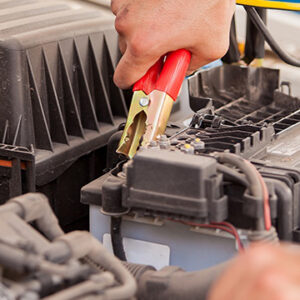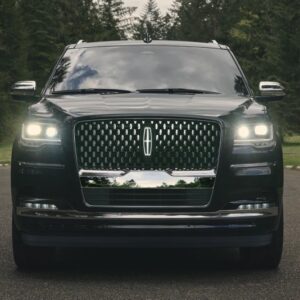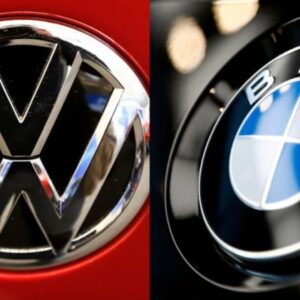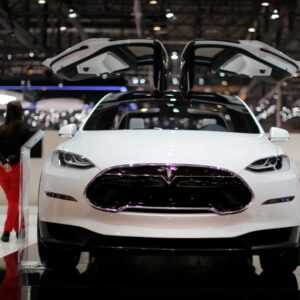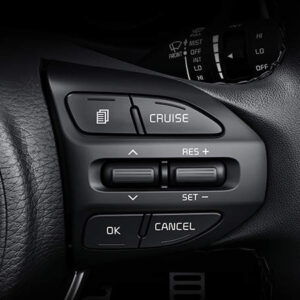What is an ecoboost engine? What does ecoboost mean? For the last few years, Ford has been touting its EcoBoost engine technology. If you’re not quite sure exactly what it is — or whether you should consider it — you’ve come to the right place. We’ve provided an overview of the Ford EcoBoost system to help you better understand the complicated technology.
What Is An Ecoboost Engine?

The EcoBoost Engine delivers powerful performance and better fuel economy than larger displacement engines. In most conventional engines, some energy is lost in the exhaust. But in the EcoBoost, the turbocharger uses the force of the exhaust to push more air into the engine, generating more power. This means a highly responsive drive with great low-speed torque and outstanding overall performance.
What Does Ecoboost Mean?
EcoBoost® is the name of Ford’s line of turbocharged, direct-injection petrol engines that are designed to deliver greater horsepower and torque while also providing greater fuel efficiency. First produced in 2009, EcoBoost® engines now come in many varieties and power a diverse selection of Ford vehicles. EcoBoost® engines range from 1.0 liters to 3.5 liters.
EcoBoost Engines Technologies
Direct Fuel Injection
A high-pressure fuel system injects fuel directly into the combustion chamber, regulates how much fuel is needed at any given time, and cools the charge to enable higher compression ratios. This greatly improves efficiency while generating more power compared with a port-injected engine.
Variable Camshaft Timing
EcoBoost Engines precisely control the intake and exhaust valves to match engine speed and load changes. The result is improved fuel economy, reduced exhaust emissions, and increased low-end engine torque compared to larger conventional engines.
Turbocharging
EcoBoost’s lightweight design improves fuel economy, while fewer cylinders mean less friction and more energy saved. Yet, thanks to turbocharging and direct injection, EcoBoost delivers the power of a much larger engine.
How Do Ford EcoBoost Engines Work?
EcoBoost motors are between 3 and 6 cylinders. With smaller displacement, they offer better compliance with environmental regulations. They also give consumers better fuel economy.
EcoBoost engines use three systems to give drivers the best of both worlds. Direct injection and variable cam timing allow the motor to be as fuel-efficient as possible. The addition of a turbocharger gives the engine good acceleration and plenty of power.
Turbocharging
Turbochargers are different from superchargers, but both provide boost to the engine. By using exhaust gases to spin a turbine, more air is forced into the cylinders. This means more power, typically in the mid-band of the RPM range. It allows for quick acceleration when needed. However, when cruising at low RPM, the engine has little or no boost. It doesn’t need more power and is able to operate more efficiently.
Direct Injection
Direct injection is one of the main types of fuel injection used today. The other most common method is port injection. Port injection sprays fuel into the intake ports, where it mixes with air before entering the cylinders. Direct injection sprays the fuel right into the combustion chamber. This means a more efficient burn, saving fuel.
The downside of direct injection is the potential for carbon build-up, which is covered below in the reliability section.
Twin Independent Variable Camshaft Timing (Ti-VCT)
Ford actually pioneered variable camshaft timing. By changing how the camshaft operates at a given time, the engine can be optimized for different conditions. The intake and exhaust valves open or close to let more or less air into the cylinders. Managing the timing in this way allows for better torque when needed, while minimizing fuel consumption during lower load. In other words, it allows for more power or better efficiency based on driver demand and other conditions. The effect is similar to variable valve timing (VVT), just achieved in a different way. Ford refers to their variable cam timing system as Ti-VCT.
How Is The EcoBoost Performance?
All EcoBoost engines are turbocharged, which improves engine power and performance without sacrificing efficiency. On average, EcoBoost gas mileage increases by 20%, while greenhouse gas emissions fall by 15%. EcoBoost engines represent unrivaled towing capacity, as demonstrated in the 2015 Ford F-150, and provide significant power and acceleration without diminishing gas mileage. As for reliability, the Ford Motor Company consistently produces some of the most reliable engines on the market, and the EcoBoost is no different.
Which Ford Models Have EcoBoost Engine?
EcoBoost engines are available in a wide variety of Ford cars, trucks and SUVs. Reach out to our Westborough Ford dealership for specifics about trim levels, but know that some of the many Ford models that can be equipped with EcoBoost® engines include:
- Ford Fiesta
- Ford Focus
- Ford Fusion
- Ford Mustang
- Ford Taurus
- Ford Escape
- Ford Edge
- Ford Flex
- Ford Explorer
- Ford Expedition
- Ford F-150
The Ford EcoBoost Engine Lineup
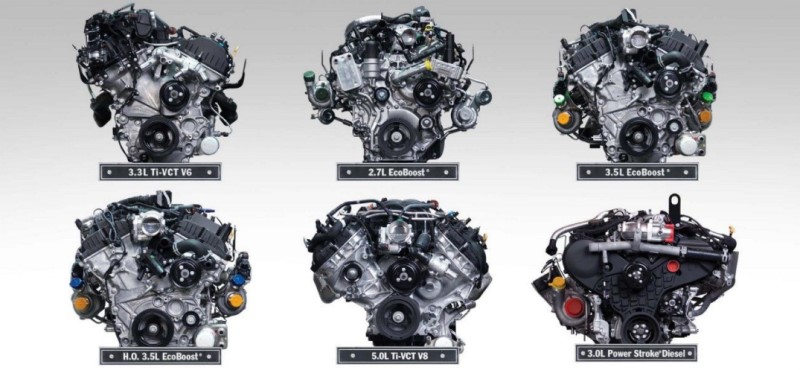
The Ford Escape EcoBoost engine is different from the Ford EcoBoost engine F-150 trucks use. Seven EcoBoost engines power the Ford lineup. Here’s an overview of each EcoBoost engine and the Ford models that use it:
Ford 1.0 EcoBoost Engine
This 1.0-liter turbocharged three-cylinder engine powers previous Ford EcoSport SUVs; the Ford EcoBoost engine 1.0 lays down 123 horsepower and 148 pound-feet of torque.
Ford 1.5 EcoBoost Engine
Standard on certain Bronco Sport and Escape trim levels, this 1.5-liter turbocharged three-cylinder engine unleashes 181 horsepower and 190 pound-feet of torque.
Ford 2.0 EcoBoost Engine
Found in the new Maverick, EcoSport, Edge, Escape, and Bronco Sport, this 2.0-liter turbocharged four-cylinder makes between 166 to 250 horsepower and 149 to 280 pound-feet of torque.
Ford 2.3 EcoBoost Engine
The 2.3 Ford EcoBoost engine powers the Bronco, Mustang EcoBoost, certain Explorer trims, and the Ranger truck; this 2.3-liter turbocharged four-cylinder engine makes between 270 to 310 horsepower and 310 to 350 pound-feet of torque.
Ford 2.7 EcoBoost Engine
The heart of an Edge ST and certain Bronco SUVs and F-150 trucks, this 2.7-liter twin-turbocharged V-6 lets loose between 315 to 335 horsepower and 380 to 410 pound-feet of torque.
Ford 3.0 EcoBoost Engine
Bestowing the Explorer ST and upcoming Bronco Raptor with immense power, this 3.0-liter twin-turbo V-6 makes between 400 to 418 horsepower and 415 to 440 pound-feet of torque.
Ford 3.5 EcoBoost Engine
You’ll find this mighty engine on the Expedition or certain F-150 trims. This 3.5-liter twin-turbo V-6 makes between 380 to 400 horsepower and 470 to 500 pound-feet of torque in standard form. As a high-output variant in the F-150 Raptor or Expedition Timberline, the 3.5 Ford EcoBoost engine makes between 440 to 450 horsepower and a hefty 510 pound-feet of torque.
The Future Of Ecoboost Engines
EcoBoost engines are vital for Ford right now. This is especially true with the tighter European Stage 5 regulations that were approved in 2016. They’re not going anywhere anytime soon, and are sure to be used in more hybrid configurations in the future.
The 2021 F-150 has a PowerBoost hybrid option, a cousin of the EcoBoost family. As Ford shifts to more electric vehicles, the technology offered by the EcoBoost motors will become less relevant. Though they’ll be used in hybrid and PHEV applications, the EcoBoost name may not be used in fully-electric vehicles.
FAQs
What is special about Ford EcoBoost?
EcoBoost Engines precisely control the intake and exhaust valves to match engine speed and load changes. The result is improved fuel economy, reduced exhaust emissions, and increased low-end engine torque compared to larger conventional engines.
Is the Ford EcoBoost a good engine?
If it is on, take your car to a qualified mechanic and have them diagnose the problem. Overall, the Ford Transit Ecoboost is a great engine, but it is not without its problems. The most common issues are overheating, oil leaks, and turbocharger failure. However, you can prevent these problems with proper maintenance.
When should you use EcoBoost?
The ideal time to use eco mode is when you’re driving at a slower pace — typically under 45 miles per hour. It’s perfect for day-to-day use in settings where you’re likely to drive in a leisurely way.
Above is information about What is an ecoboost engine? that we have compiled. Hopefully, through the above content, you have a more detailed understanding of What does ecoboost mean? Thank you for reading our post.
